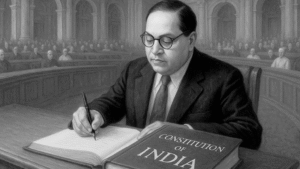How Electric Vehicles Can Reduce Pollution in Indian Cities: A Middle-Class Perspective
Introduction
India is home to some of the most polluted cities in the world, with vehicular emissions being a major contributor. With rapid urbanization and increasing middle-class aspirations, the number of vehicles on the roads has surged, worsening air quality. In this scenario, electric vehicles (EVs) present a promising solution to reduce pollution and create a healthier environment. However, for India’s middle class, affordability, infrastructure, and awareness are crucial factors that influence EV adoption.
The Growing Pollution Crisis in Indian Cities
According to various studies, vehicular pollution contributes significantly to deteriorating air quality in cities like Delhi, Mumbai, Kolkata, and Bangalore. Conventional petrol and diesel vehicles emit carbon monoxide (CO), nitrogen oxides (NOx), and particulate matter (PM), leading to respiratory diseases and environmental degradation. The middle class, which forms the largest segment of India’s population, is both a victim and a contributor to this crisis, as rising incomes lead to higher vehicle ownership.
How Electric Vehicles Can Reduce Pollution
- Zero Tailpipe Emissions EVs do not produce harmful emissions like traditional internal combustion engine (ICE) vehicles. By switching to EVs, middle-class families can actively reduce their carbon footprint and contribute to cleaner air.
- Reduction in Noise Pollution Unlike traditional vehicles, EVs run on battery power and produce minimal noise. This can significantly reduce noise pollution in congested urban areas, improving the quality of life.
- Energy Efficiency and Renewable Integration EVs are far more energy-efficient than ICE vehicles. When powered by renewable sources like solar or wind energy, their environmental impact is even lower. With India investing heavily in renewable energy, EVs can become a sustainable transport solution for the middle class.
- Lower Dependence on Fossil Fuels India’s dependence on imported oil strains the economy. EV adoption can reduce this dependency, leading to energy security and reduced economic burden on middle-class families who often face fluctuating fuel prices.
Challenges in EV Adoption for the Middle Class
Despite the benefits, the adoption of EVs among India’s middle class faces several challenges:
- High Initial Cost EVs are generally more expensive than their petrol or diesel counterparts. Although subsidies and incentives under the FAME (Faster Adoption and Manufacturing of Electric Vehicles) scheme help, affordability remains a concern for many middle-class buyers.
- Limited Charging Infrastructure One of the biggest roadblocks to EV adoption is the lack of widespread charging stations. Middle-class families living in apartments often struggle with access to charging facilities.
- Battery Life and Replacement Costs EV batteries degrade over time and are expensive to replace. Concerns over battery longevity and replacement costs deter middle-class consumers from making the switch.
- Resale Value Uncertainty The resale market for EVs is still evolving, making many potential buyers hesitant to invest due to uncertainties regarding resale value.
Government Initiatives to Promote EVs
The Indian government has been actively promoting EV adoption through various schemes and incentives:
- FAME India Scheme: Offers subsidies for EV purchases to make them more affordable.
- State-Level Incentives: Several states provide additional tax benefits and subsidies for EV buyers.
- Charging Infrastructure Development: The government is setting up charging stations in urban areas to support EV adoption.
- GST Reduction: EVs attract a lower GST rate (5%) compared to petrol/diesel vehicles (28%).
The Role of the Middle Class in EV Adoption
The Indian middle class is known for its pragmatic approach to adopting new technologies. To accelerate EV adoption, the following steps can be taken:
- Government and Private Sector Collaboration Public-private partnerships can drive the expansion of charging infrastructure, making EVs more convenient for middle-class families.
- Affordable Financing Options Banks and NBFCs should introduce easy loan options with lower interest rates for EV buyers.
- Second-Hand EV Market Development Establishing a robust resale market for EVs will boost buyer confidence.
- Awareness and Education Public campaigns highlighting the long-term cost savings and environmental benefits of EVs can help change perceptions.
Conclusion
Electric vehicles have the potential to revolutionize urban mobility in India while significantly reducing pollution. For the middle class, affordability, infrastructure, and awareness remain key to widespread adoption. With supportive policies, technological advancements, and better financing options, EVs can become a practical and sustainable choice, leading to cleaner and greener Indian cities.
- Important Links:
Share this content:











Post Comment